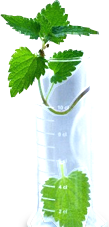



Author(s): Gordhan Parmar*, Sunita Jain
The present study was planned to evaluate the anti-hyperlipidemic activity of theophyllin, a bronchodilator for its effect on lipid levels, HMG-CoA reductase activity and lipid peroxidation in Poloxamer 407 and high-cholesterol diet-induced hyperlipidemia in rats. The animals were divided into four groups, viz. normal, high cholesterol diet (control), Atorvastatin and theophylline treated groups. In Poloxamer-407 induced acute hyperlipidemia model, blood samples were collected at 15 and 24 hour period, and there after lipid parameters and HMG-CoA reductase activity were estimated and compared with atorvastatin reference standard treated animals. In high fat diet-induced model, animals were given respective treatment for a period of twenty one days. Lipid parameters and antioxidant parameters were measured and compared with atorvastatin treated animals at the end of study period. High cholesterol diet and Poloxamer 407 caused a significant increase in serum total cholesterol (TC), LDL-C, VLDL-C, TG and atherogenic index (AI) along with significant decrease in HDL-C and HDL/LDL ratio. In poloxamer model, Theophylline pre-treatment showed a significant decrease in total cholesterol, LDL-C, VLDL-C, and atherogenic index, with no marked change in HDL-C, TG and HDL/LDL ratio. It also showed significant inhibition of HMG-CoA reductase activity as compared to poloxamer control group. Similarly, in high fat diet model, theophylline demonstrated significant reduction in serum cholesterol, TG, VLDL and AI. In addition this, antioxidant parameters were measured in terms of Malondealdehyde levels, superoxide dismutase, catalase and reduced glutathione. Theophylline did not show any remarkable change in this parameter suggesting lack of antioxidant mechanisms. Based on our data, it is suggested that theophylline possesses hypolipidemic activity. The mechanism of action of this could be attributed to reduction (p < 0.05) in an AI and inhibition of HMG-CoA reductase activity.